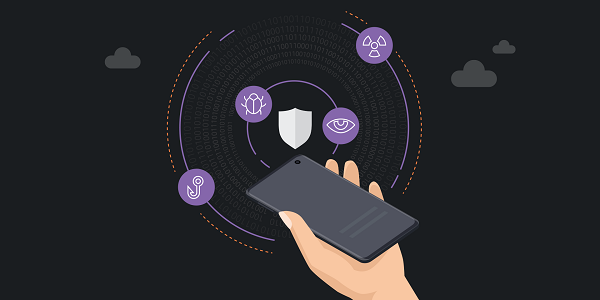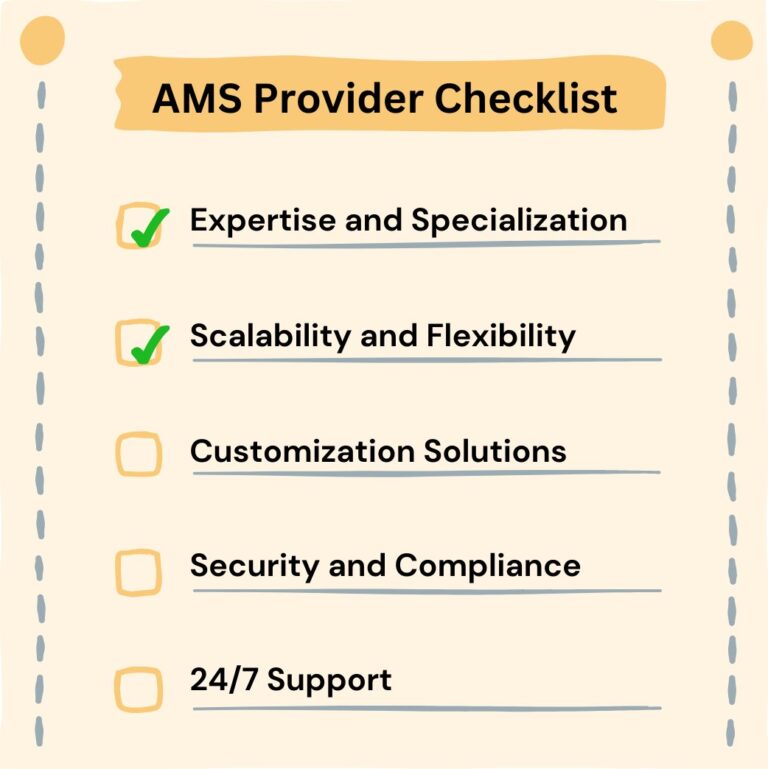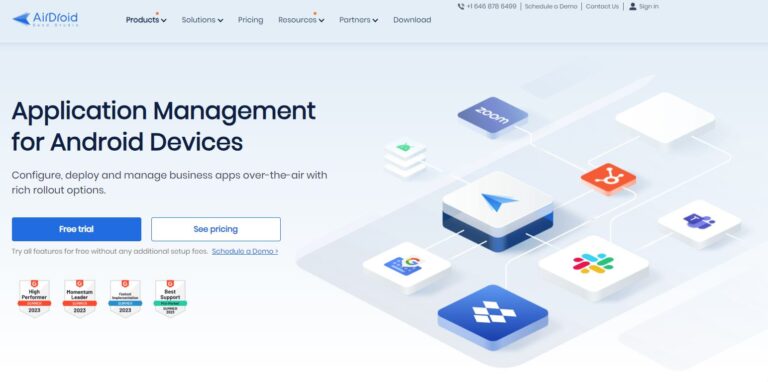Application Management Services: What is AMS and How Can You Benefit From it?
Imagine a day without using any apps. It's very unlikely, right?
According to research by Zippia, we use at least 9-10 apps daily and 30 per month.
Businesses are in the same boat. They rely on apps more than ever to carry out daily tasks and connect with their customers. With the rapid pace of technology, the number of apps keeps growing. This also means more headaches for IT departments trying to manage them.

Fortunately, there's a solution: Application Management Services (AMS). AMS ensures smooth maintenance and upgrades of applications. The numbers back this up too, with the AMS market valued at $17.12 billion in 2020, and projected to soar to $94.79 billion by 2030.
In this article, we will walk you through what AMS is, its benefits for businesses of all sizes, and how to select the right AMS provider.
- 1 : What is Application Management Services (AMS)?
- 2 : What are the Key Components of AMS?
- 3 : Why Does Your Business Need AMS?
- 4 : Benefits Your Business Will Gain from AMS
- 5 : How to Choose the Right AMS Provider?
- 6 : AirDroid Business MDM: Application Management

- 7 : Application Management Service vs. Managed IT Services
- 8 : Final Verdict: Do I Really Need an AMS Provider?
- 9 : FAQs about AMS
1 What is Application Management Services (AMS)?
For those still wondering about AMS, it's quite straightforward: it allows companies to hand over the management, upkeep, and improvement of their apps to an external AMS provider.
These AMS providers are made up of teams of experts who know how to effectively handle various vital apps for businesses, making sure they run at their best. This expertise helps companies keep their important software systems running smoothly.
Oftentimes, when companies start using new apps, they might not have the technical skills to set them up properly. That's where you need AMS providers. They handle the setup, configuration, and testing before the app is ready for teams to use.
Quick Guide - Definition, Benefits and Usages of AMS
2 What are the Key Components of AMS?
AMS consists of different parts that offer various solutions for managing apps, depending on a company's needs. These parts include:
● Application Management Service
This involves tasks like creating, testing, deploying, and maintaining applications. By handling these technical aspects, AMS lets companies concentrate on their core business.
● Application Maintenance and Support
These services guarantee that apps run smoothly. They do this by regularly updating software, applying security fixes, and quickly addressing any unexpected issues.
● Application Monitoring
AMS providers keep a close eye on server status, application performance, and crucial infrastructure components. This proactive monitoring helps catch potential problems before they disrupt app performance.
● Performance Optimization
AMS experts work on fine-tuning app code, optimizing server settings, and identifying performance issues. The goal is to make sure that all apps run as efficiently as possible.
● Security Measures
This section is all about making sure your apps and data stay safe from both inside and outside risks.
This means setting up things like strong encryption for sending data, using extra layers of authentication for users, and regularly checking for and fixing any weak points through security audits.

3 Why Does Your Business Need AMS?
Now that you have a good understanding of what AMS is, let's explore why businesses find it so essential. There are several strong reasons why organizations rely on AMS.
Gain immediate access to experts:
AMS provides instant access to application experts without the need for recruitment and training. These experienced professionals have diverse skills to optimize various business applications.
A more cost-effective solution:
AMS is cost-effective because it's an outsourced service. Companies only pay for the assistance they receive, eliminating concerns about employee payroll taxes, benefits, and training costs. Better yet, it also reduces expenses related to infrastructure, hardware, software, licenses, and networking equipment.
Focus on core activities:
Outsourcing application management allows companies to focus on their core business activities. This not only enhances efficiency but also ensures that the company's internal resources are directed towards driving growth and innovation.
Scalability of application infrastructure:
This means businesses have the flexibility to increase or decrease their outsourced resources as required, aligning with their financial situation and evolving business needs as they progress through different phases of their operations.
Improved app performance:
AMS improves app availability and performance, bolsters security, ensures compliance with industry regulations, streamlines maintenance costs, and enhances overall employee satisfaction and productivity.
4 Benefits Your Business Will Gain from AMS
Benefits of AMS Services for Large Enterprises
Large enterprises often grapple with the task of handling a multitude of complex applications. As these companies grow, managing every active application becomes more challenging, and internal IT teams may struggle to keep up with the workload.
By teaming up with an AMS provider, these enterprises can entrust the management, monitoring, maintenance, and optimization of their apps. This proactive approach helps them steer clear of future backlogs, user dissatisfaction, interruptions during the workday, and other operational hiccups.
Benefits of AMS Services for Small and Medium-Sized Businesses
Small and medium-sized businesses (SMBs) often deal with limited internal IT resources and may not have extensive physical infrastructure. Because of this, they heavily rely on applications to run their operations.
Since it's crucial to keep these apps working smoothly, up-to-date, and secure, SMBs often choose to use AMS. These providers ensure that all systems operate well, preventing work disruptions and potential customer loss.
By doing this, these companies also avoid the need for, and costs associated with, hiring full-time, in-house IT support.
| Benefits of AMS Services | Challenges Faced | AMS Benefits |
|---|---|---|
| Large Enterprises | Managing a multitude of complex applications becomes more challenging as the company grows. | Efficient utilization of AMS services eliminates the need for large, in-house IT teams, optimizing costs for large enterprises. |
| Small and Medium-Sized Businesses | Limited internal IT resources and reliance on applications due to minimal physical infrastructure. | SMBs avoid the effort and costs associated with hiring in-house IT support. This allows SMBs to focus resources on core business activities. |
5How to Choose the Right AMS Provider?
If you're considering outsourcing application management to an AMS provider, here's a practical checklist to help you make an informed decision.
● Advisory Services:
Reputable AMS providers start by thoroughly analyzing your app setup. This understanding helps them identify your company's challenges and create a tailored plan. It's vital to ensure they grasp your unique needs to offer precise solutions.
● Expertise:
Look for AMS providers with experience managing similar applications. This ensures they can effectively address your specific challenges and deliver results. Proficiency in your industry or app type is invaluable for tackling your requirements.
● Customization:
A tailored approach ensures that the AMS provider aligns their services with your unique needs, maximizing benefits. This level of customization allows for seamless integration into your workflows, amping up efficiency.
● Cost Transparency:
Understand the costs associated with AMS services. Seek providers with clear pricing to avoid hidden fees. Knowing the costs upfront helps you make a budget-friendly decision.
● Scalability options:
Choose an AMS provider capable of growing with your company. They should have a pool of experts to scale your team as needed. Flexibility in the contract allows adjustments as your needs change, supporting your business growth.
● 24/7 support:
Uninterrupted AMS support ensures uninterrupted app performance. It also means timely issue resolution without disrupting your internal teams. This availability is critical, especially in industries sensitive to downtime.

6AirDroid Business MDM: Application Management
If you're unsure whether your business needs an AMS, consider the application management feature within Mobile Device Management (MDM).
AirDroid Business is a standout MDM tool that lets you efficiently oversee applications on a wide range of Android devices through a centralized dashboard.

It offers robust features like:
- App Installation: Easily add and deploy apps.
- App Uninstallation: Remove apps individually or in batches.
- Staged Rollout: Gradually deploy updates to prevent disruptions.
- Progress Monitoring: Track rollout progress and device activity.
- Forced Installation: Ensure mandatory app usage.
- Application-Related Alerts: Monitor app status and data usage.
You can also find MDM being applied in various industry sections:
1. Healthcare
Healthcare organizations now equip patients with wearables and medical apps for daily monitoring. With AirDroid Business, admins can easily push crucial updates, conduct security fixes, and address bugs, ensuring seamless operation no matter where patients are located.
2. Digital Signage
Many companies rely on digital signage to engage customers and bolster brand recognition. Unexpected app or device issues can result in display malfunctions, incurring significant costs for brands.
Fortunately, AirDroid Business offers a "Remote Troubleshooting" feature. This empowers admins to swiftly address issues, minimizing the impact on customer experience.
3. IT Services
The IT services industry stands to benefit greatly from this tool. These companies often rely on their internal teams to secure in-house applications and ensure their continuous functionality.
However, this diverts staff from critical business tasks essential for company growth. With AirDroid Business App Management Service, IT admins can efficiently uninstall or distribute apps, providing immediate support whenever needed.
7 Application Management Service vs. Managed IT Services
AMS application management services frequently cause misunderstandings, some people mistake it for managed IT services. It's crucial to separate application management from other fields for which people wrongly swap its use, regardless of whether acronym saturation or bad communication is to blame:
To guarantee applications are available, AMS application management services keep an eye on each of their constituent parts. Even while system-based monitoring is crucial, application management goes beyond availability.
An application management service simply contracts out to a third-party expert the upkeep, monitoring, and some security facets of application administration. The third-party supplier may be in charge of overseeing all or a portion of your apps.
Managed IT services are used when you have reported problems with broken hardware or software. In this case, either an internal or external IT support team is needed. Software is also kept up to date by IT support staff. Application management is much more proactive and has a wider reach.
8 Final Regards
In today's digital age, effective application management is paramount for business success. AMS services oversee app functionality, ensuring seamless operations for businesses of all sizes.
This leads to improved internal processes and heightened user satisfaction, while AirDroid Business, a leading Mobile Device Management (MDM) tool, further refines application management.
With features like app distribution and customizable settings, it simplifies operations. Embracing these solutions empowers businesses to fine-tune their application management strategies, driving overall operational efficiency.
In this dynamic tech landscape, integration is not just an option; it's a requisite for thriving in the competitive business arena.





Leave a Reply.